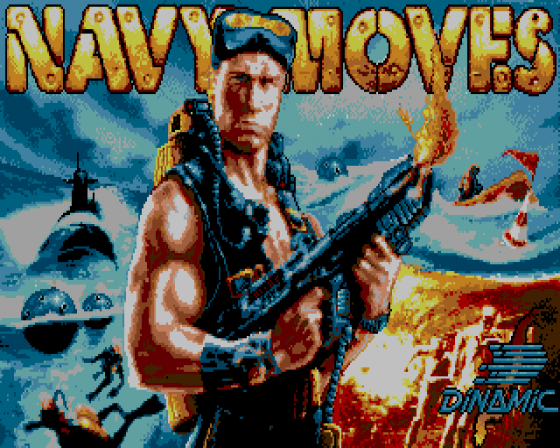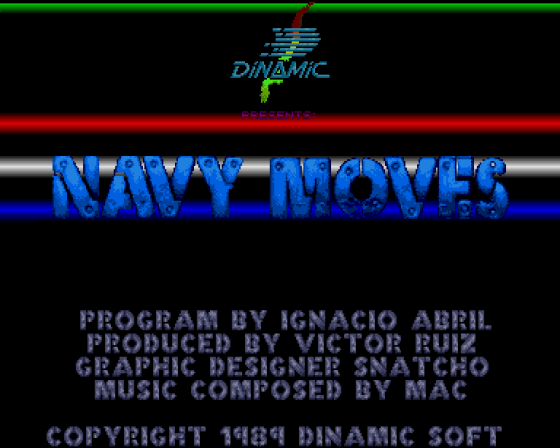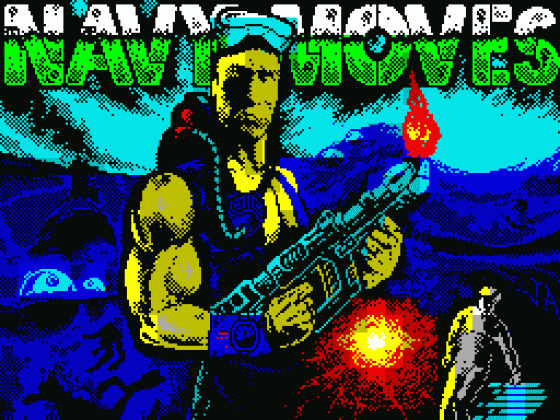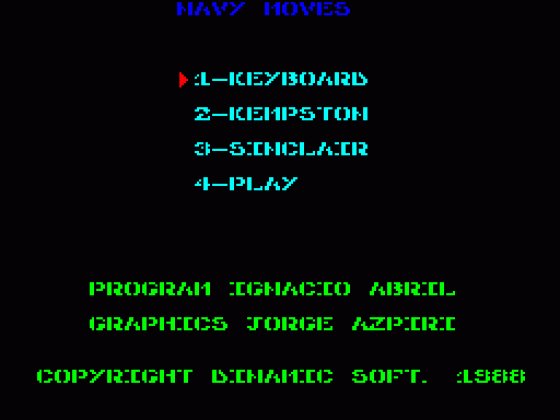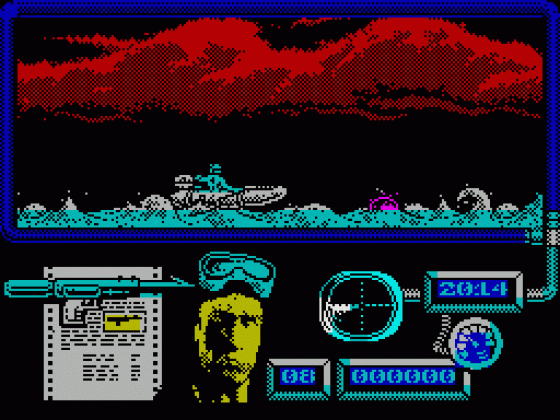
C&VG
 1st September 1989
1st September 1989
Categories: Review: Software
Publisher: Dinamic
Machine: Spectrum 48K/128K/+2/+3
Published in Computer & Video Games #94
Navy Moves
Does anyone out there remember Army Moves? Even if you don't, this is the sequel which, instead of putting you at the wheel of a cutey jeep pops you into a cutey speedboat and other forms of aquatic transport.
Both games were conceived by Dinamic, a group of programmers big in Spanish software circles. Fresh from a vacation spent flexing your muscles and learning to swim, you're assigned the task of locating (Part One) and destroying (Part Two) the nuclear submarine U-5544 - a mission curiously named Operation Octopus.
The briefing provides you with vital information on how to deal with the enemies ahead of you, and even gives you a map of the submarine itself. Sounds simple? Not so fast... Part One comprises three sections, each one with a specific type of deadly enemy to combat. The first sees you in a motorboat avoiding mines and bumping off enemies with your trusty United Defence Model II rifle, in much the same way, as the jeep section in Army Moves. Then it's oxygen tank at the ready as you plumb the ocean depths in a suit of high sensitivity lubricated latex, fending off sharks and scuba-divers in an attempt to locate and capture an enemy bathyscape.
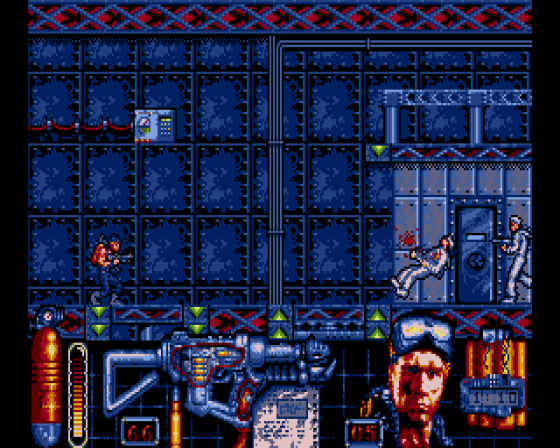
As if this wasn't hard enough, once in the bathyscape you've got to find the sub whilst single-handedly beating up huge octopi hidden in caves and a 1200kg sea monster.
Fortunately, at the end of all this you're given a code for Part Two, so that once you've successfully managed Part One you need never play it again. Inside the submarine the game becomes a little more enjoyable: you can wander around rather than being constantly set back by the linear shoot-'em-up action of the First Part. There's just one snag, however: you need codes to open doors which are found only on appropriate officials - for example, to open the door to the base of the reactor, you need to obtain the Machine Official's code (by shooting and searching him) and then transmitting that code to the central computer.
The object is to blow up the reactor and escape alive, and it's made much more enjoyable by the weaponry available to you, particularly the flamethrower which handily roasts anyone stupid enough to come within twenty feet.

Enemies are only useful for a couple of things: codes, target practice and extra fire. It's gratuitous but it's also good fun. If you've bought a Dinamic game before, you'll know what to expect - lots of frustration but plenty of action. The instructions are pretty good, even to the extent of giving you a few handy hints on baddie-bashing; it's just a pity that the graphics are below par and the difficulty level is at the point where the TV goes out of the window.
Commodore 64
Even though there are only four levels, the cripplingly tough gameplay means most people will spend hours of frustration completing them. The C64 is capable of much more than Navy Moves has to offer in terms of graphics and sound (despite the decent title tune), and there are many more (better) military games than this.
Atari ST
Smarter graphics than the Commodore, but the gameplay is just as tough and frustrating. Recommended only to masochists.
Amiga
To all intents and purposes the same as the ST, unfortunately. There's just not enough enjoyment for your money.
Other Reviews Of Navy Moves For The Spectrum 48K/128K/+2/+3
Navy Moves (Dinamic)
A review by Nick Roberts (Crash)
Navy Moves (Dinamic)
A review by Matt Bielby (Your Sinclair)
Navy Moves (Electronic Arts)
A review by Jim Douglas (Sinclair User)
Scores
Atari ST Version| Graphics | 55% |
| Sound | 75% |
| Value For Money | 59% |
| Playability | 29% |
| Overall | 33% |
Scores
Spectrum 48K/128K/+2/+3 Version| Graphics | 55% |
| Sound | 75% |
| Value For Money | 59% |
| Playability | 29% |
| Overall | 34% |
Scores
Amiga 500 Version| Graphics | 55% |
| Sound | 75% |
| Value For Money | 59% |
| Playability | 29% |
| Overall | 33% |


